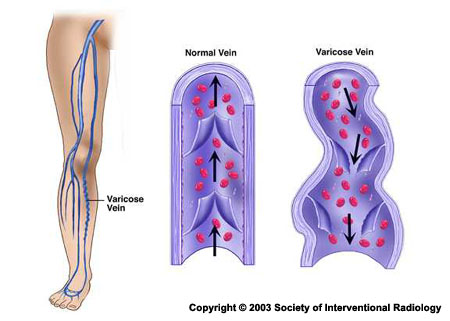Overview
About Your Veins
Whether you desire cosmetic improvement or relief of symptoms related to leg vein problems, the following information should help you understand your condition and your treatment options.
The Venous System

Veins throughout your body return blood back to your heart. In the legs, the veins are often carrying blood against the force of gravity. In order to do this efficiently, veins have one-way valves to prevent blood from flowing backwards. If the valves fail to close properly, blood can leak through the valves and pool in the veins.
Eventually this pooling causes stretching of the vein walls resulting in enlargement and bulging of the vein. These enlarged veins are called telangiectasias (or spider veins) and varicose veins.
Spider veins are thin, red, purple, or blue veins and are located just below the skin’s surface. Varicose veins are larger veins deeper under the skin that are abnormally enlarged. Varicose veins can eventually protrude from the skin surface, resulting in a worm-like appearance.
To present you with the best treatment options, it is important for us to discuss the symptoms you are experiencing, other treatments you may have had in the past, and any other medical problems you may have.
After a physical exam, a variety of diagnostic tests may be used to further evaluate the veins in your legs. The most common test used at the Northwestern Vein Center is the duplex ultrasound. The test is painless and can usually be done on the same day as your consultation.
The important information gained during your consultation will help our team determine the cause, severity and best treatment options for your particular problem.

